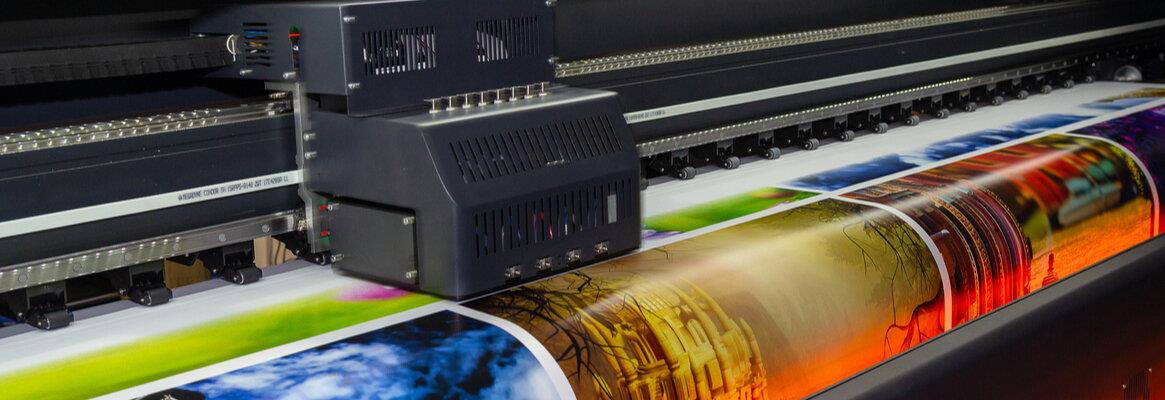Fabrics for digital textile printing: which materials are appropriate for digital printing?

In the textile printing business, digital textile printing is the most recent invention. A growing number of printers are switching to digital printing to take advantage of the competitive advantages it provides, such as faster production rates and the ability to print complicated designs and fine patterns. Before choosing if digital textile printing is something that your printing firm could be interested in, it’s important to understand the capabilities of digital printing in terms of the materials that can be digitally printed on.
Explanation of digital textile printing technique
Digital textile printing is an inkjet-based printing technique that allows printers to produce high-quality patterns on a wide variety of textiles. There are, however, some fabrics that are not suitable for this printing technique. I explain which textiles may and cannot be used in digital textile printing in this post. Understanding the technology underlying digital printing is necessary to properly comprehend why some textiles cannot be utilized for digital printing.

In digital printing, the fabric must first be prepared before being fed through a high-speed inkjet printer. A digital textile printing machine reads the correct colour information and prints the colours onto the fabric using a printable pattern from a digital data file.
Thousands of print heads generate microscopic droplets of ink, which colour the cloth. A few millimetres above the substrate, these print heads are positioned (SPGPrints Archer technology enables a distance of 4 millimetres from the substrate).

Textile printing materials created using digital technology
The multiple print heads used in digital textile printing provide high-quality patterns and allow for a quick production rate. However, because the print heads are so near to the cloth, some materials aren’t suitable for digital printing. Fabrics having a lot of loose threads, for example, might come into contact with the print heads and cause damage.

Both woven and knitted textiles can benefit from the digital textile printing process. I list which materials are appropriate for digital printing and which are not in the following list:

Cotton
Cotton is a natural material that is frequently used for apparel, particularly in the fashion sector, due to its great moisture control, comfort, and durability. Cotton may be printed with a digital textile printing equipment. Most digital printers utilise reactive inks to get the best possible quality, as this type of ink has the best wash fastness for printing on cotton.
Viscose
Viscose is another natural fabric that is commonly utilised in the fashion industry. It is feasible to print on viscose with a digital printer. When printing on viscose using reactive ink, you’ll obtain the greatest results, just like when printing on cotton.
Wool
It is feasible to print on wool with a digital textile printer, however it is dependent on the type of wool used. If you wish to print on “hairy” wool, which is a sort of wool with a lot of loose threads hanging out, you’ll need to place the print heads as far away from the substrate as possible. Woolen yarn is five times the diameter of the nozzle in the print head, causing the printer head to be badly damaged.
Silk
Silk is another natural fabric that may be used for digital textile printing. Silk can be printed with either reactive inks or acid inks, depending on whether high-fastness is a necessity (if colour gamut is priority).
Lycra polyamide
Polyamide lycra is a kind of fabric used mostly in swimwear. It is feasible to print on polyamide lycra with a digital printer, and acid inks are recommended. You get the best colour brightness, wash fastness, and resistance to sea water and chlorine when you use acid inks.
Polyester
Polyester has been an increasingly popular fabric in the fashion industry over the last several years. The most often used ink for printing on polyester, though.
As a result, printers have shifted to sublimation printing on paper, and have recently succeeded in using sublimation inks to print directly on polyester fabric. The latter requires a more expensive printer due to the requirement for a belt system to retain the fabric, but also saves printers money on paper and eliminates the need for steaming or cleaning.
In general, sublimation printing on polyester achieves lower fastnesses than printing with dispersion inks. However, in the fashion industry, this is a reasonable tradeoff for long-term sustainability.
Fabrics from various sources
Digital printing equipment might struggle with mixed textiles, which are made up of two distinct types of materials. Only one type of ink may be used in digital textile printing. Because each material requires a different type of ink, you must use the ink that is appropriate for the material that makes up the majority of the fabric as a printer. This implies that the ink will not adhere to the fabric’s other materials, perhaps resulting in faint colours.
For Digital Printing Services Contact us at www.www.truecolours.pk
Comments
Post a Comment